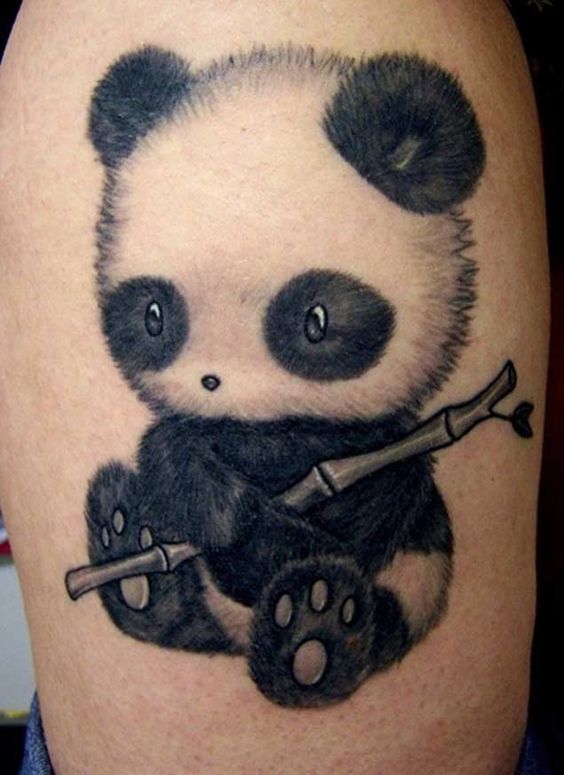7 Unique Differences Between Giant Pandas And Other Bears
It took some time to properly classify the panda as a bear. But even then, there are still some differences between Giant Pandas and other bears.

Humans have a particularly interesting trait, we really like to classify things neatly and avoid confusion.
But if there’s one creature that caused some confusion for a while, it’s the Giant Panda. This creature shares similarities with two distinct group of animals; the bears and the raccoon.
In fact, at the earlier stage when researchers studied the panda, they placed it in the same family as bears. Later on, another scientist, a Frenchman named Alphonse Milne-Edwards, studied the remains of a panda and decided it was closer to a “cat-like” creature in the raccoon family; the Red panda. Therefore, he promptly changed its name and put it into its own category.
Even the giant panda’s scientific name is evidence of this classification issue as Ailuropoda Melanoleuca literally means “cat-foot black-and-white.”
Anyway, after extensive studies, the giant panda is classified firmly as a bear. But it doesn’t end there. The panda bear still has several unique characteristics to separate it from other bears.
After reading through them below, you’ll understand better why this creature is so unique.
7 Unique Differences Between Giant Pandas And Other Bears
1) Evolution
Although pandas and bears belong to the same family Ursidae, they evolved differently. The giant panda branched off from other bears much earlier on the evolutionary tree. Estimates say a few hundred-thousand years at least.
What does that imply? Well, the panda bear still exhibits some “crude” traits other bears no longer have. Consequently, it belongs in its category and is often referred to as a “living fossil.”
There are two recognized subspecies of the giant panda: the primary better-known subspecies Ailuropoda Melanoleuca and Ailuropoda Melanoleuca Qinlingensis (the Qinling Panda).
2) Distribution
Bears as a whole are fascinating, strong, and fearsome creatures. These ancient animals have been able to survive some of the most brutal conditions the planet and humans have thrown at them.
They have been able to adapt and thrive in different terrain worldwide on several different continents. You’ll find bears in warm temperatures or icy regions.
But not the giant panda.
Their native home is in the remote mountains of central China. Specifically in Sichuan, but also in the Shaanxi and Gansu provinces. However, human activities like farming and forest clearing have chased pandas out of many other areas they once lived in.
3) Diet
Just like the panda, other bears have the digestive system and dentition of carnivores. But as expected, other bear species have mostly had to adapt to eating a wide variety of meals based on availability/scarcity of meat.
When bears can’t find meat, they’ll gladly eat berries, fruit, and even human cooked food. But not the panda bear.
Pandas need bamboo. In fact, pandas literally live on bamboo.
Their diet is at least 99 percent bamboo. Though they will accept small quantities of honey, eggs, fish, yams, oranges, and bananas, giant pandas are notorious for being picky eaters.
But just give them bamboo and everyone’s happy.
The above is another of the major differences between giant pandas and other bears.
4) Hibernation
On a day-to-day basis, other bears are much more active than our beloved pandas. They need to move around to find suitable food after all!
Not giant pandas.
Giant pandas would rather just sit as close as possible to a steady supply of bamboo and chomp away for hours at a time. How does this concern hibernation, you may wonder.
Well, it appears this very poor diet (bamboo) is the primary reason panda bears don’t hibernate. Bamboo does not provide enough nourishment and body fat for them to sleep through the winter.
In winter, other bears hibernate, pandas just get moving to slightly warmer environments.
5) Coloring
Bears as a whole sport a wide kaleidoscope of body fur color. From the white polar bears, to black fur bears, blond fur, brown fur, reddish fur, and so on.
Pandas have just the one similar pattern of white and black. The color distribution around their bodies are similar with the distinct black teardrop-shaped marking around both eyes.
6) Extra Thumb
Giant pandas have six ‘fingers.’
Unlike other bears that have five claws on each paw, the panda has six digits on its front paws. This gives it an opposable thumb likely evolved to help it hold onto the stalks of its favorite meal; bamboo.
They use this thumb the same way we humans do when we want to get a firm grip on objects.
7) Male And Female Panda Cubs Are Similar
You can’t tell girl or boy giant panda newborns apart. That’s because the genitalia of male pandas doesn’t descend until some time after birth. In fact, it could take weeks, or months, before one can tell the cub’s sex, just by glancing at it.
Truly, the giant panda is one unique creature.







